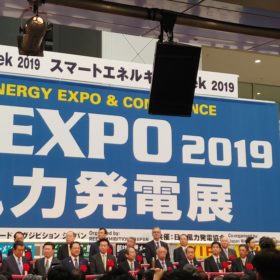Smart meters set to disrupt the arch disrupter solar
In both Belgium and Chile, the planned mandatory installation of smart meters is raising concerns among consumers, residential PV system owners and the solar industry. Although seen as a positive, the early stages of smart meter deployment create issues related to the calculation of net metering tariffs and the management and ownership of consumption data, as well as additional costs for consumers.
Poland’s PV capacity reaches 486.5 MW
With more than 200 MW of newly installed PV, 2018 was a record year for Polish solar. Of the nation’s total PV capacity, 339.5 MW comes from 50 kW or smaller arrays.
BIPV in Europe: More than just a facade
The renowned PV-Lab at Switzerland’s École Polytechnique Fédérale De Lausanne today announced that it has taken on the role of coordinator for the EU funded research project ‘Be-Smart’, which aims at developing a European industry for building integrated PV components.
The weekend read: A battery and inverter powerhouse
In December, pv magazine met SolaX Power president Li Xinfu and his team at the company’s headquarters in sprawling Hangzhou, in Zhejiang province. The region is a hotspot for the Chinese PV industry and SolaX belongs to the cutting edge of Chinese inverter and residential battery manufacturers.
Norway saw 23.5 MW of solar come online in 2018
Despite the small figure, last year saw the nascent Norwegian PV market expand 29% from the previous year. The country’s cumulative installed PV capacity reached approximately 68 MW at the end of December.
World Bank provides $185m for 310 MW of renewable capacity in Bangladesh
Multilateral lender hopes to leverage $212 million more from the private sector as falling solar development costs make renewables more attractive. A solar plant with a 50 MW capacity in Feni will be one of the first to benefit from the new funds.
Global solar demand reached 104 GW in 2018
According to new figures released by SolarPower Europe, last year saw 1.4 GW more new solar generation capacity than trade body had expected. Lower demand in China was compensated for by stronger developments in emerging markets.
Smart Energy Week in Tokyo: Self-consumption, storage and a plentiful pipeline for now
Though we’re unlikely to see a return to the days of double-figure GW annual installation levels, Japan will stay at the top table of solar. Last week, pv magazine visited PV Expo Japan, part of Tokyo’s World Smart Energy Week, and found plenty of market developments to discuss, along with healthy interest from major players.
Wallonia’s grid fee for prosumers will apply only to new systems
The controversial charge for residential PV systems will apply only to installations connected to the grid after July 1, and will come into force from 2020. Wallonia has around 1.1 GW of installed solar capacity, most of it residential PV systems.
Storage preferred to net metering in Indonesia as new rules prove ineffective
According to solar body the PPLSA, around 300 PV system owners have already gone off-grid as the tariff granted for surplus power under net metering was not attractive enough. Several barriers are preventing net metering taking hold, including an obligation to either use locally made equipment or pay more to re-certify imported modules and inverters.










